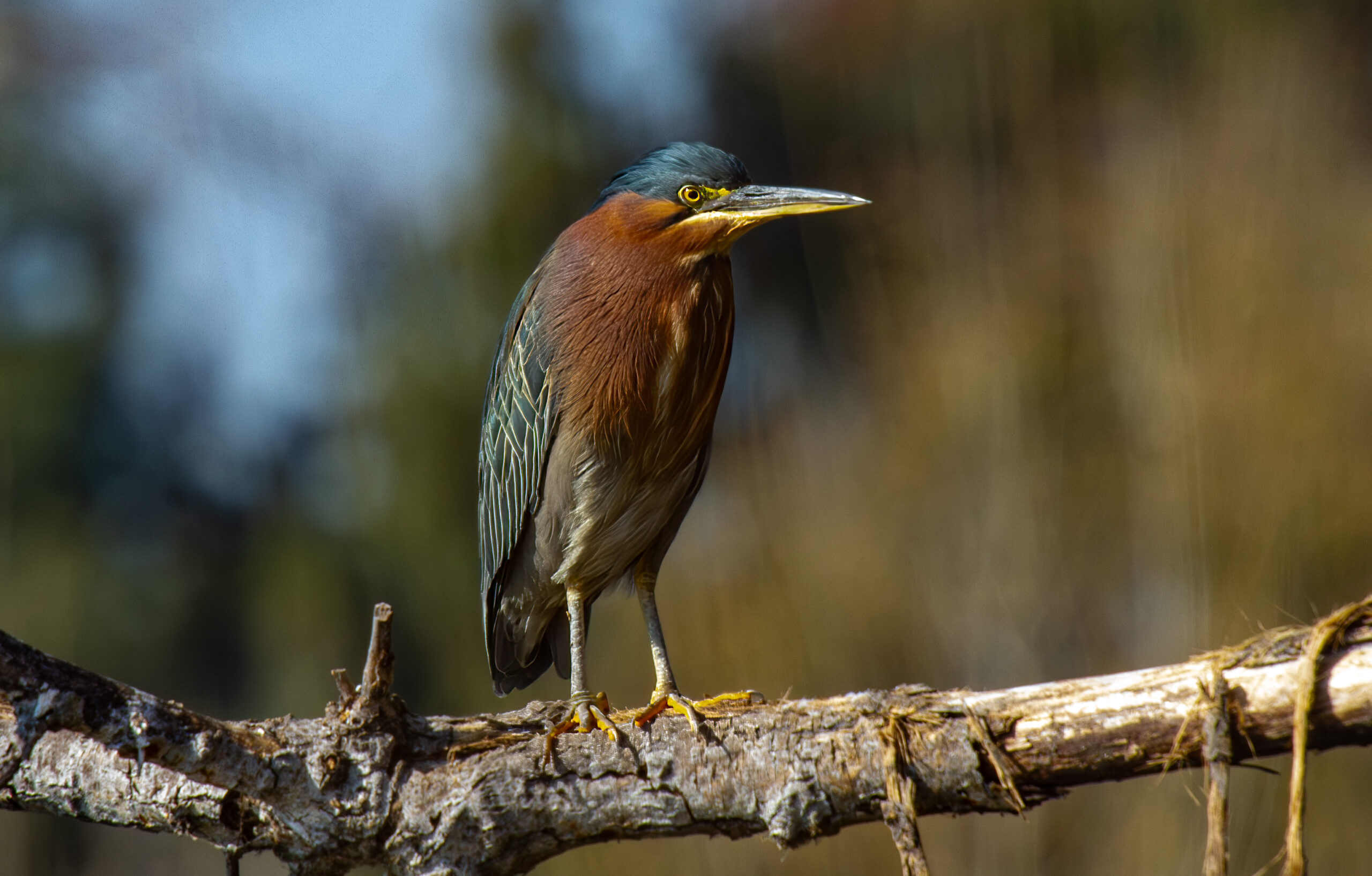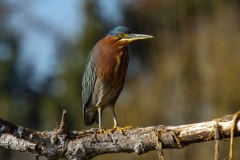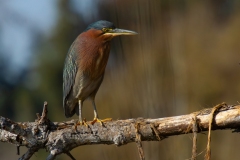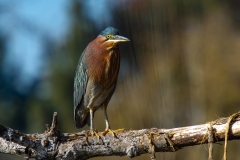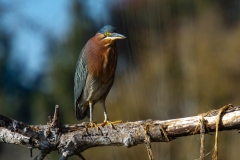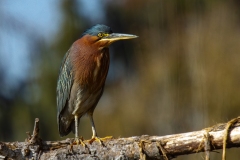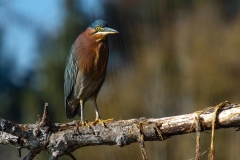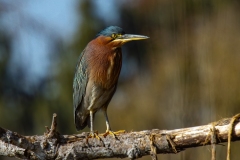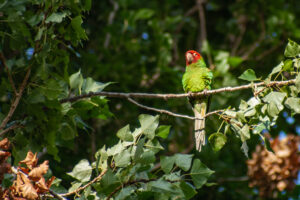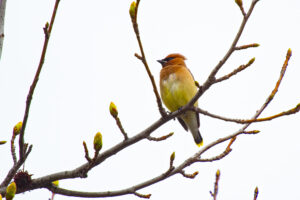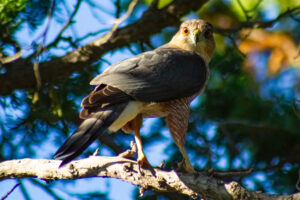The Green Heron (Butorides virescens) is a small heron of North and Central America. Butorides is from Middle English butor “bittern” and Ancient Greek -oides, “resembling”, and virescens is Latin for “greenish”.
The green heron is relatively small; adult body length is about 44 cm (17 in). The neck is often pulled in tight against the body. Adults have a glossy, greenish-black cap, a greenish back and wings that are grey-black grading into green or blue, a chestnut neck with a white line down the front, grey underparts and short yellow legs. The bill is dark with a long, sharp point. Female adults tend to be smaller than males, and have duller and lighter plumage, particularly in the breeding season. Juveniles are duller, with the head sides, neck and underparts streaked brown and white, tan-splotched back and wing coverts, and greenish-yellow legs and bill. Hatchlings are covered in down feathers, light grey above, and white on the belly.
The habitat and foraging area of the green heron includes riparian zones, wetlands, ponds, and lakes, as well as human-made canals and ditches. Green herons do not exhibit a particular preference for diurnal or nocturnal foraging, often engaging in both. Shore-living individuals adapt to the rhythm of the tides. They mainly eat small fish, frogs and aquatic arthropods, but may take any invertebrate or vertebrate prey they can catch, including such animals like leeches, earthworms, dragonflies, damselflies, waterbugs, grasshoppers, spiders, crayfish, prawns, mice, other rodents, lizards, tadpoles and snakes
